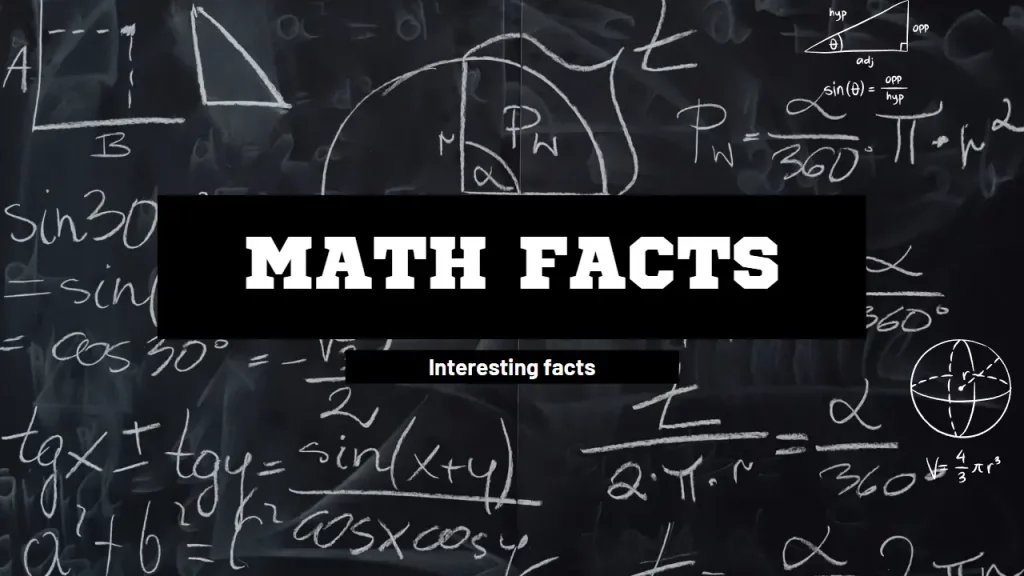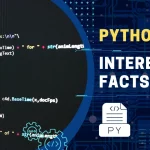There’s no denying that math can be intimidating for some. But there’s also no denying how important and useful it is, regardless of what you do. To help make math a bit more interesting, here are some interesting facts about mathematics that will surely surprise even the most seasoned mathematicians.

Interesting Facts About Mathematics
- The symbol for pi (π) has been used for over 4,000 years. It was first used by the ancient Babylonians, who inscribed it on clay tablets. Today, mathematicians continue to use pi as a fundamental concept in mathematics and other sciences.
- The number of possible ways to shuffle a deck of cards is 52! (52 factorial), which is approximately 8.0658e67. It is larger than the number of atoms in the observable universe.
- If you were to write out all the numbers from 1 to 100 sequentially on paper, it would take up nearly half a page! That may seem surprising but when you think about it logically—all those zeros do add up!
- The number of grains of sand on the Earth is estimated to be around 7.5 sextillions.
- The number 1 is the only number that is both a square (1 x 1) and a cube (1 x 1 x 1).
- The first known use of the equal sign (=) was by Robert Recorde in 1557.
- The number of prime numbers is infinite.
- The Fibonacci sequence, which starts with 0 and 1 and adds the previous two numbers to get the next, appears in many natural phenomena, such as the arrangement of leaves on a stem and the branching of trees.
- The golden ratio, which is approximately 1.618, appears in many natural and artistic designs and is often considered aesthetically pleasing.
- The number of possible combinations in a standard Sudoku puzzle is 6,670,903,752,021,072,936,960.
- Euclid’s Elements was published in 300 BC and is considered by many historians to be one of the most influential texts written in history due to its extensive use in mathematics and science fields today. It was written entirely using deductive reasoning which means Euclid started with a set of assumptions (or axioms) and then used logic to prove his points rather than appeal to authority or observation like other authors did during this time period!
- Calculus was invented independently by both Isaac Newton and Gottfried Leibniz during the 17th century but Leibniz’s notation is still used today while Newton’s has been largely forgotten!
- The word “hundred” first came from the old Norse term, “hundrath”, used to count elements of large collections such as soldiers in an army or coins in a treasury. The surprise is that it was initially used to denote 120, instead of the modern Western understanding of 100.
- In a group of only 23 people, the chance of finding two people sharing the same day of birth is actually 50%. That can be considered quite impressive and almost unbelievable! Even more astounding is that when you increase the number of people to just 70, the chances rise to 99%.
- Forty is an oddly intriguing number – it’s the only one in English with its letters arranged in alphabetical order. On the contrary, “One” is the only numerical value to be written with letters arranged in descending order.
- Many people might be surprised to learn that every single odd number in English words contains the letter “e”! This fascinating phenomenon occurs because when we spell out the numbers, odd numbers like one, three, five, and so on include an “e” in them. Even higher-numbered odd numbers such as twenty-three or seventy-nine can contain the letter “e” if we spell out their numerical values properly.
- Mathematical thought has been around since the Stone Age. Remarkably, it seems that around 30,000 BC marks on animal bones found at archaeological sites show us evidence of an intuitive mathematical understanding – humans have been counting and conducting abstract calculations for more than 40,000 years.
- Often considered the foundation of our number system, zero can be questioned by its absence in Roman numerals. Technically, there is no symbol to represent zero in Roman numeral form. Its omission can be simplified to the fact that not all cultures originated with an understanding of the concept
- How fascinating is it that there are only two prime numbers that end in 2 or 5? Out of the vast array of prime numbers, only 2 and 5 have the defining characteristic of coming to a close with the digits 2 or 5.
- Have you ever wondered what it would be like to live life in the blink of an eye? Well, you can get close to experiencing that with a ‘jiffy’ – an actual unit of time! A jiffy is a measurement of time equal to 1/100th of a second, making it one of the shortest possible measurements of time.





